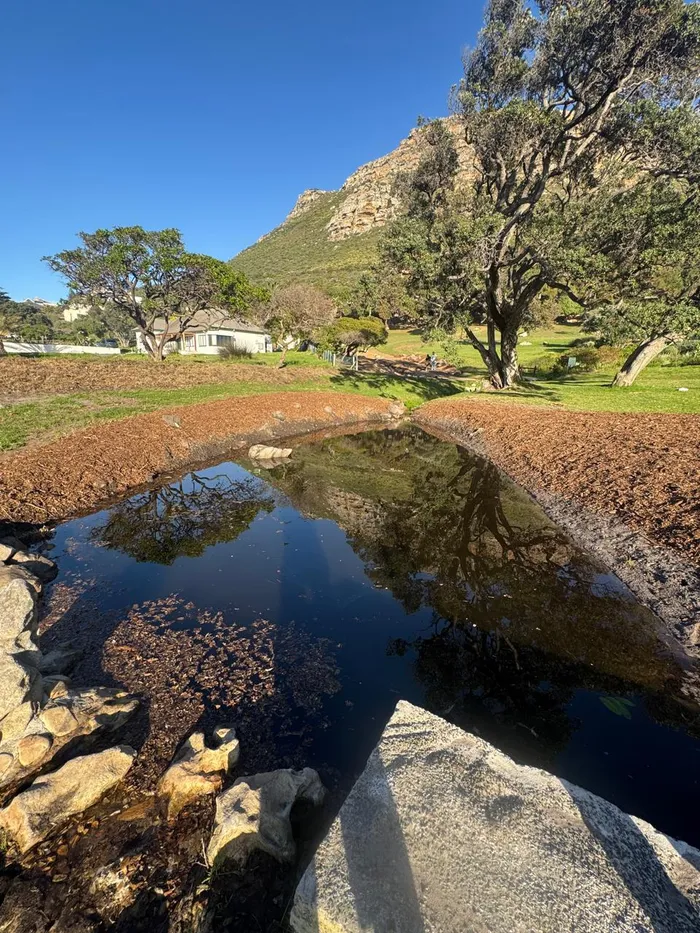Phase two of Muizenberg Park restoration approved

Phase 2 of the Muizenberg Park wetland restoration project aims to revive critically endangered freshwater fynbos and restore the historic lily pond.
Image: Supplied
The Friends of Muizenberg Park have announced the start of Phase 2 of their wetland and stream restoration project.
Building on the success of the first phase in 2023, the group is working to revive further one of the Cape Peninsula’s most ecologically rich public green spaces.
This phase focuses on reintroducing critically endangered Cape Lowland Freshwater Wetland Fynbos, a rare vegetation type that once thrived in the area.
According to the Friends of Muizenberg Park, its return will support a wide variety of plant and animal species found nowhere else in the world.
“Restoring Cape Lowland Freshwater Wetland Fynbos in Muizenberg Park is an important contribution to preserving the unique biodiversity of the Cape Peninsula,” said Terri De Sousa, chairperson of the Friends of Muizenberg Park.
“This vegetation enhances habitat quality for frogs, birds, and pollinators, strengthens ecological resilience, and improves natural water filtration.”
The group reports that two highly threatened plant species have already been reintroduced, along with another that serves as the sole food source for a vulnerable butterfly species.
These efforts form what they describe as a “living gene bank” – helping safeguard rare species from extinction and raising awareness of Cape Town’s fragile natural heritage.
A major feature of Phase 2 is the restoration of the park’s historic lily pond, situated at the lower end of the stream.
According to the Friends group, the pond served as a breeding ground for amphibians and supported a wide range of biodiversity in the 1990s, but it gradually silted up due to runoff from mountain fires in Peck’s Valley above the park.
“Restoring this pond enhances local biodiversity,” said Ms De Sousa. “It provides vital breeding grounds for frogs and toads – key indicators of environmental health – and also helps reconnect residents with their natural heritage and fosters environmental stewardship.”
The group plans to replant the pond with indigenous waterblommetjies (Aponogeton distachyos) and establish new fynbos beds along both sides of the stream to increase plant diversity and support pollinators.
As part of the landscape adjustments, aloe plants currently growing in a waterlogged area near the old Bowling Clubhouse will be moved to the park’s rockery garden along Main Road.
Their current site will be replanted with species native to freshwater wetlands.
The park sits at the meeting point of four different fynbos types, which the group says makes it a unique opportunity for urban habitat restoration.
Project spokesperson John Venn said the groundwork laid during Phase 1 was crucial to expanding the project this year.
“Just a year ago, we removed truckloads of invasive vegetation and replaced them with hundreds of indigenous fynbos plants, including rare and threatened species,” he said. “Those plants have thrived, and now we’re able to expand their reach in Phase 2.”
The group has noted a visible transformation of the park since last year, helped along by the addition of a new children’s playground.
“This project offers not only measurable ecological benefits but has also visibly enhanced the aesthetic appeal and public use of the park,” said Mr Venn. “It’s incredibly encouraging and affirms our commitment to creating an inclusive, vibrant, and biodiverse public space.”
While a single donor funded Phase 1, Ms De Sousa said Phase 2 has received broader community support, with dozens of residents contributing both donations and hands-on help.
“That kind of involvement is what will allow us to keep growing the project into new areas in 2026,” she said.
Those interested in contributing or learning more can contact John Venn at jgvenn@yahoo.com.
Related Topics: